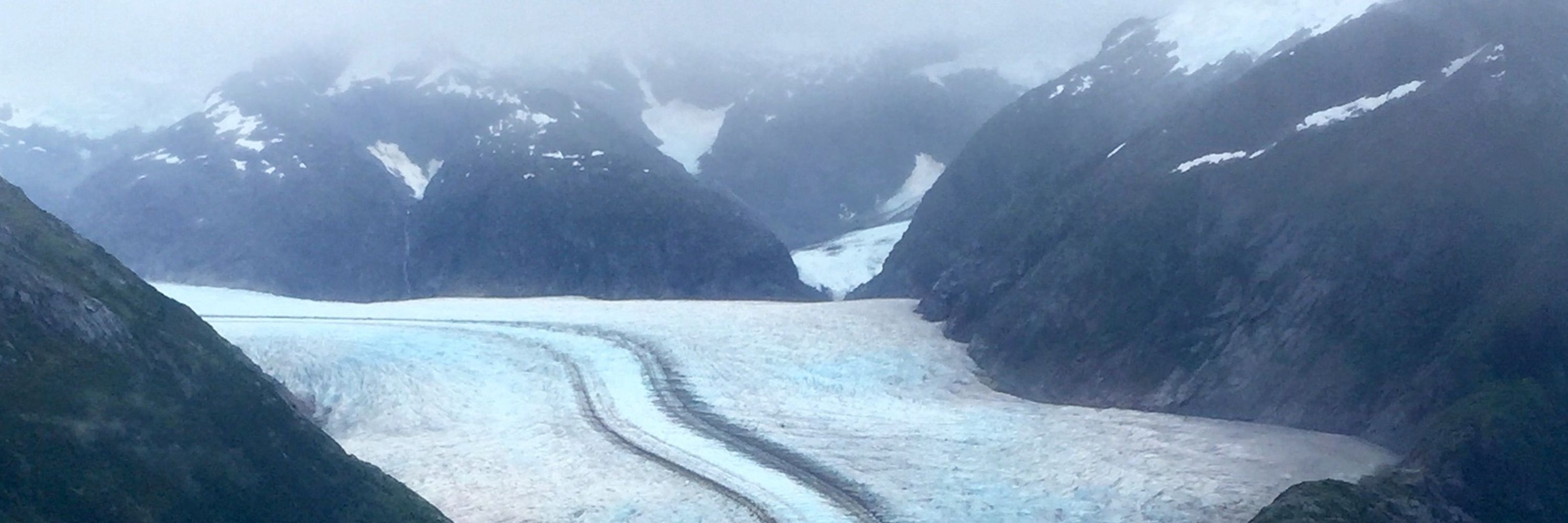
NSIDC
@nsidc.bsky.social
We are the National Snow and Ice Data Center at the University of Colorado Boulder. We conduct innovative research and provide open data to understand how the frozen parts of Earth affect the rest of the planet and impact society.
March Arctic sea ice extent averaged 14.14 million square kilometers (5.46 million square miles), the lowest in the 47-year satellite record and 150,000 square kilometers (58,000 square miles) below the previous record low March set in 2017.
Read our analysis: nsidc.org/sea-ice-toda...
Read our analysis: nsidc.org/sea-ice-toda...
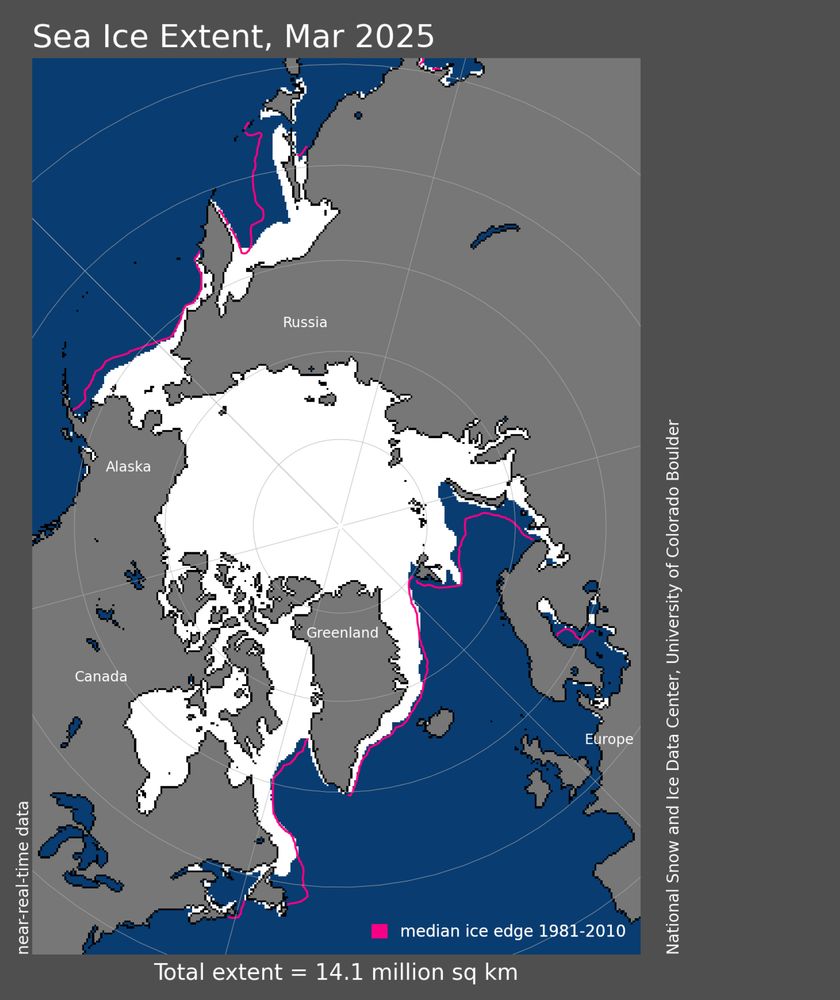
Spring is in the air
Arctic sea ice extent for March set a record low in the 47-year satellite data record. Extent was below average everywhere except the East Greenland Sea.
nsidc.org
April 3, 2025 at 10:54 PM
March Arctic sea ice extent averaged 14.14 million square kilometers (5.46 million square miles), the lowest in the 47-year satellite record and 150,000 square kilometers (58,000 square miles) below the previous record low March set in 2017.
Read our analysis: nsidc.org/sea-ice-toda...
Read our analysis: nsidc.org/sea-ice-toda...
Reposted by NSIDC
🚨 March 2025 #Arctic sea ice extent was the lowest on record...
This was 1,290,000 km² below the 1981-2010 average. March ice extent is decreasing at about 2.46% per decade. Data: @nsidc.bsky.social (nsidc.org/data/seaice_...)
This was 1,290,000 km² below the 1981-2010 average. March ice extent is decreasing at about 2.46% per decade. Data: @nsidc.bsky.social (nsidc.org/data/seaice_...)
April 2, 2025 at 3:19 PM
🚨 March 2025 #Arctic sea ice extent was the lowest on record...
This was 1,290,000 km² below the 1981-2010 average. March ice extent is decreasing at about 2.46% per decade. Data: @nsidc.bsky.social (nsidc.org/data/seaice_...)
This was 1,290,000 km² below the 1981-2010 average. March ice extent is decreasing at about 2.46% per decade. Data: @nsidc.bsky.social (nsidc.org/data/seaice_...)
Have you checked out Snow Today yet? Now is a good time, because our latest Snow Today analysis, focusing on snow conditions in the western US in March 2025, is up!
Snow-covered area across the western US was 92% of average for March, ranking 17th in the 25-year satellite record. bit.ly/3FTHwih
Snow-covered area across the western US was 92% of average for March, ranking 17th in the 25-year satellite record. bit.ly/3FTHwih
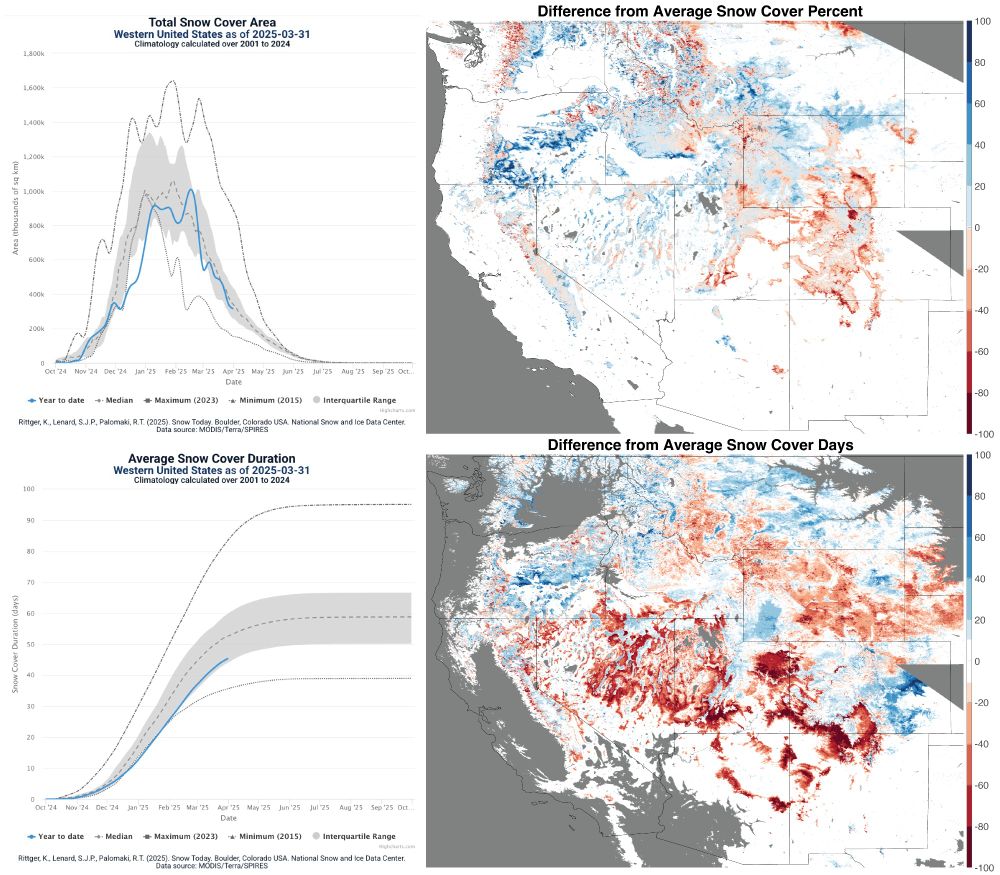
April 3, 2025 at 7:37 PM
Have you checked out Snow Today yet? Now is a good time, because our latest Snow Today analysis, focusing on snow conditions in the western US in March 2025, is up!
Snow-covered area across the western US was 92% of average for March, ranking 17th in the 25-year satellite record. bit.ly/3FTHwih
Snow-covered area across the western US was 92% of average for March, ranking 17th in the 25-year satellite record. bit.ly/3FTHwih
Reposted by NSIDC
🚨 It's official - 2025 likely observed the lowest annual maximum #Arctic sea ice extent on record!
Climate change is reshaping the Arctic, all throughout the year.
For more information from @nsidc.bsky.social: nsidc.org/sea-ice-toda...
Climate change is reshaping the Arctic, all throughout the year.
For more information from @nsidc.bsky.social: nsidc.org/sea-ice-toda...
March 27, 2025 at 7:38 PM
🚨 It's official - 2025 likely observed the lowest annual maximum #Arctic sea ice extent on record!
Climate change is reshaping the Arctic, all throughout the year.
For more information from @nsidc.bsky.social: nsidc.org/sea-ice-toda...
Climate change is reshaping the Arctic, all throughout the year.
For more information from @nsidc.bsky.social: nsidc.org/sea-ice-toda...
Reposted by NSIDC
“Warming temperatures are what’s causing the ice to decline. You know, sea ice in particular is very sensitive... 31 degrees is ice skating and 33 degrees it’s swimming.” ~ Walt Meier @nsidc.bsky.social
www.ecowatch.com/arctic-sea-i...
www.ecowatch.com/arctic-sea-i...

2025 Arctic Sea Ice Reaches Record Low Maximum Extent - EcoWatch
Scientists at NSIDC said that Arctic sea ice most likely reached its yearly maximum extent on March 22, at 5.53 million square miles.
www.ecowatch.com
March 29, 2025 at 3:16 AM
“Warming temperatures are what’s causing the ice to decline. You know, sea ice in particular is very sensitive... 31 degrees is ice skating and 33 degrees it’s swimming.” ~ Walt Meier @nsidc.bsky.social
www.ecowatch.com/arctic-sea-i...
www.ecowatch.com/arctic-sea-i...
Reposted by NSIDC
“What happens in the Arctic, as people have said, doesn’t stay there. It affects us all," said Mark Serreze, @nsidc.bsky.social director and CIRES fellow, in a recent article about Arctic Science Summit Week.

'A real loss': Boulder hosts Arctic research meeting, but US federal presence was muted by Trump directive
The meeting, among the largest annual Arctic gatherings, came as Trump administration policies barred some federal scientists from attending.
buff.ly
March 31, 2025 at 4:00 PM
“What happens in the Arctic, as people have said, doesn’t stay there. It affects us all," said Mark Serreze, @nsidc.bsky.social director and CIRES fellow, in a recent article about Arctic Science Summit Week.
Reposted by NSIDC
Arctic sea ice grows in winter, reaching its peak in March before starting the summer melt. This year's peak was the lowest in almost half a century. That has ramifications for the speed of global warming and for extreme weather further south. @nsidc.bsky.social www.bloomberg.com/news/article...
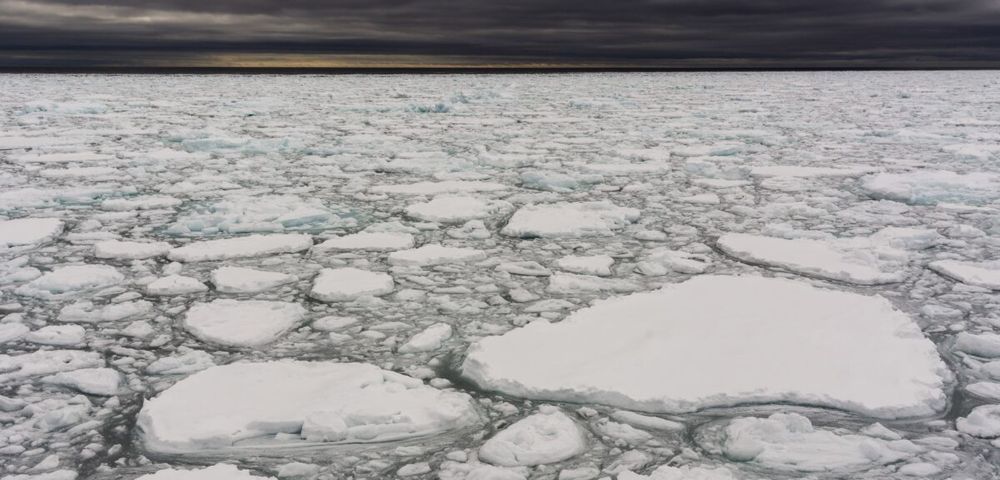
Arctic Sea Ice Shrinks to Record Winter Low as Earth Heats Up
The Arctic Ocean likely had the smallest winter ice cover in 47 years of satellite records this season, with just 5.53 million square miles of sea ice covering the region at its peak on March 22.
www.bloomberg.com
March 27, 2025 at 6:55 PM
Arctic sea ice grows in winter, reaching its peak in March before starting the summer melt. This year's peak was the lowest in almost half a century. That has ramifications for the speed of global warming and for extreme weather further south. @nsidc.bsky.social www.bloomberg.com/news/article...
Reposted by NSIDC
Don't forget to come support the NNA undergraduate research students tomorrow, March 28, if you're still at the ICARP Summit!
For those attending the ICARP IV Summit this week, please join us on Friday, March 28 from 2-3pm MT in the CIRES Auditorium for poster presentations from the NNA undergraduate research students. Come support the next generation of Arctic researchers!

March 27, 2025 at 4:37 PM
Don't forget to come support the NNA undergraduate research students tomorrow, March 28, if you're still at the ICARP Summit!
Arctic sea ice likely reached its maximum extent for the year at 14.33 MM sq km (5.53 MM sq mi) on 3/22. The 2025 maximum sea ice extent is the lowest in the 47-year satellite record.
Learn more: nsidc.org/news-analyse...
Learn more: nsidc.org/news-analyse...
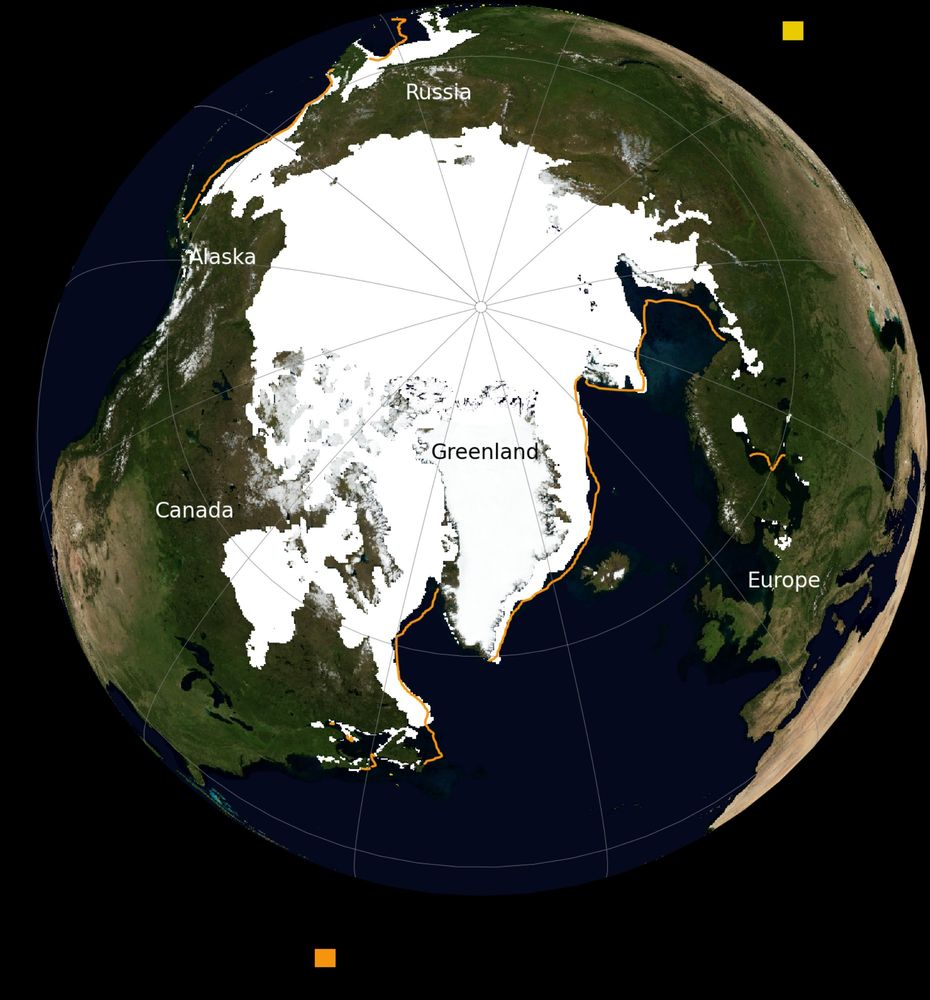
Arctic sea ice hits record low maximum extent for the year
Arctic sea ice has likely reached its maximum extent for the year, at 14.33 million square kilometers (5.53 million square miles) on March 22, according to scientists at the National Snow and Ice Data...
nsidc.org
March 27, 2025 at 4:14 PM
Arctic sea ice likely reached its maximum extent for the year at 14.33 MM sq km (5.53 MM sq mi) on 3/22. The 2025 maximum sea ice extent is the lowest in the 47-year satellite record.
Learn more: nsidc.org/news-analyse...
Learn more: nsidc.org/news-analyse...
Reposted by NSIDC
🧊 New ice core study of the last ice age by Chloe Brashear, Tyler Jones et al. suggests abrupt warming events were preceded by periods of unusually stable temperatures. Shifting sea ice is a potential driver of the phenomenon.
Read our story: www.colorado.edu/instaar/2025...
Read our story: www.colorado.edu/instaar/2025...

Thawing the mysteries of ancient climate changes
A new study from Chloe Brashear, Tyler Jones and others suggests abrupt warming events were preceded by periods of unusually stable temperatures during the last
www.colorado.edu
March 26, 2025 at 8:47 PM
🧊 New ice core study of the last ice age by Chloe Brashear, Tyler Jones et al. suggests abrupt warming events were preceded by periods of unusually stable temperatures. Shifting sea ice is a potential driver of the phenomenon.
Read our story: www.colorado.edu/instaar/2025...
Read our story: www.colorado.edu/instaar/2025...
Melting on the Antarctic Ice Sheet for the 2024 to 2025 season began with above average melt extents in all regions, but melt extent dropped to nearly zero or below average from February 1 to March 15.
Read more in our latest Ice Sheets Today analysis: bit.ly/4c4iLMd
Read more in our latest Ice Sheets Today analysis: bit.ly/4c4iLMd
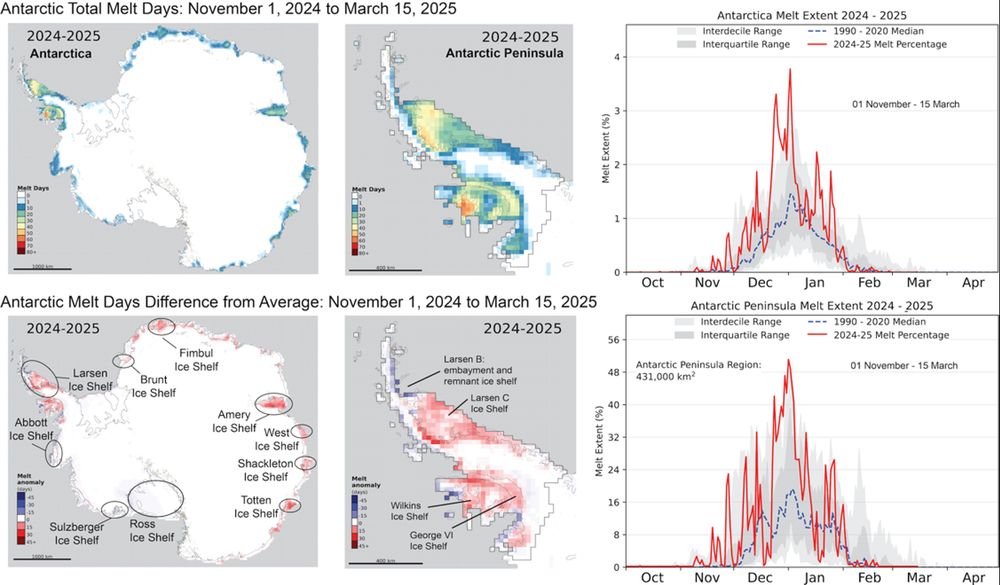
March 25, 2025 at 9:35 PM
Melting on the Antarctic Ice Sheet for the 2024 to 2025 season began with above average melt extents in all regions, but melt extent dropped to nearly zero or below average from February 1 to March 15.
Read more in our latest Ice Sheets Today analysis: bit.ly/4c4iLMd
Read more in our latest Ice Sheets Today analysis: bit.ly/4c4iLMd
Reposted by NSIDC
Are you involved in the Navigating the New Arctic (NNA) community? Interested in creating a webpage for your project or improving your data visualization capabilities? The ADC invites the NNA community to join our outreach team in creating customizable data portals during our office hours at ASSW
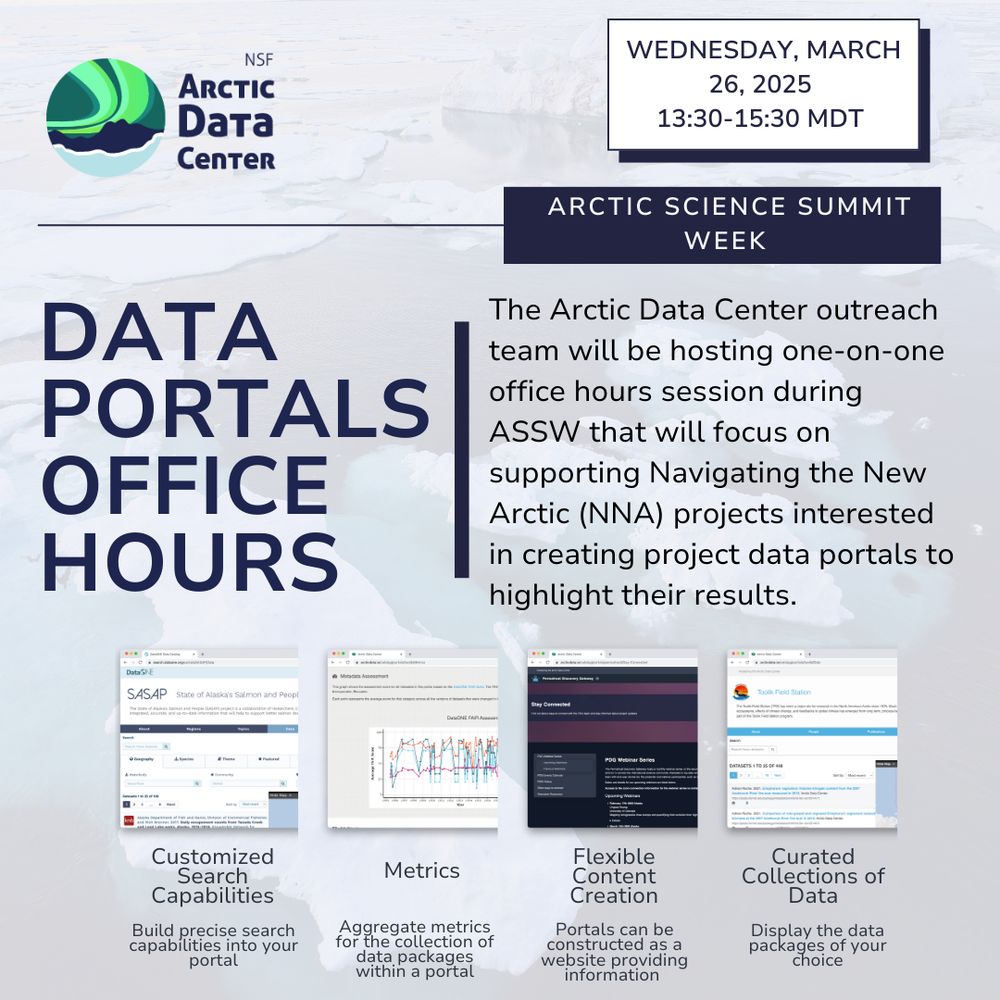
March 24, 2025 at 4:31 PM
Are you involved in the Navigating the New Arctic (NNA) community? Interested in creating a webpage for your project or improving your data visualization capabilities? The ADC invites the NNA community to join our outreach team in creating customizable data portals during our office hours at ASSW
Reposted by NSIDC
NASA Earthdata blog: "From Onboarding to Fledging and Beyond—An Openscapes Journey. After learning how to migrate workflows to the cloud during onboarding, NASA Openscapes participants “fledge” to use their new skills in cloud-based scientific research."
www.earthdata.nasa.gov/learn/blog/o...
www.earthdata.nasa.gov/learn/blog/o...

From Onboarding to Fledging and Beyond—An Openscapes Journey | Earthdata
The Earth Observing System Data and Information System
is a key core capability in NASA’s Earth Science Data Systems Program. It provides end-to-end
capabilities for managing NASA’s Eart...
www.earthdata.nasa.gov
September 17, 2024 at 5:37 PM
NASA Earthdata blog: "From Onboarding to Fledging and Beyond—An Openscapes Journey. After learning how to migrate workflows to the cloud during onboarding, NASA Openscapes participants “fledge” to use their new skills in cloud-based scientific research."
www.earthdata.nasa.gov/learn/blog/o...
www.earthdata.nasa.gov/learn/blog/o...
Reposted by NSIDC
"The Greenland Ice Sheet is not the only important ice mass on the planet, but it plays an especially critical role at this moment in climate history," writes Twila Moon, deputy lead scientist @nsidc.bsky.social and researcher at CIRES.
thebulletin.org
March 24, 2025 at 3:00 PM
"The Greenland Ice Sheet is not the only important ice mass on the planet, but it plays an especially critical role at this moment in climate history," writes Twila Moon, deputy lead scientist @nsidc.bsky.social and researcher at CIRES.
Sea ice has been well below average in the Gulf of St. Lawrence this winter. A recent NASA "Image of the Day," acquired by the Moderate Resolution Imaging Spectroradiometer on NASA’s Aqua satellite, shows the Gulf of St. Lawrence on March 13, 2025.
earthobservatory.nasa.gov/images/15406...
earthobservatory.nasa.gov/images/15406...
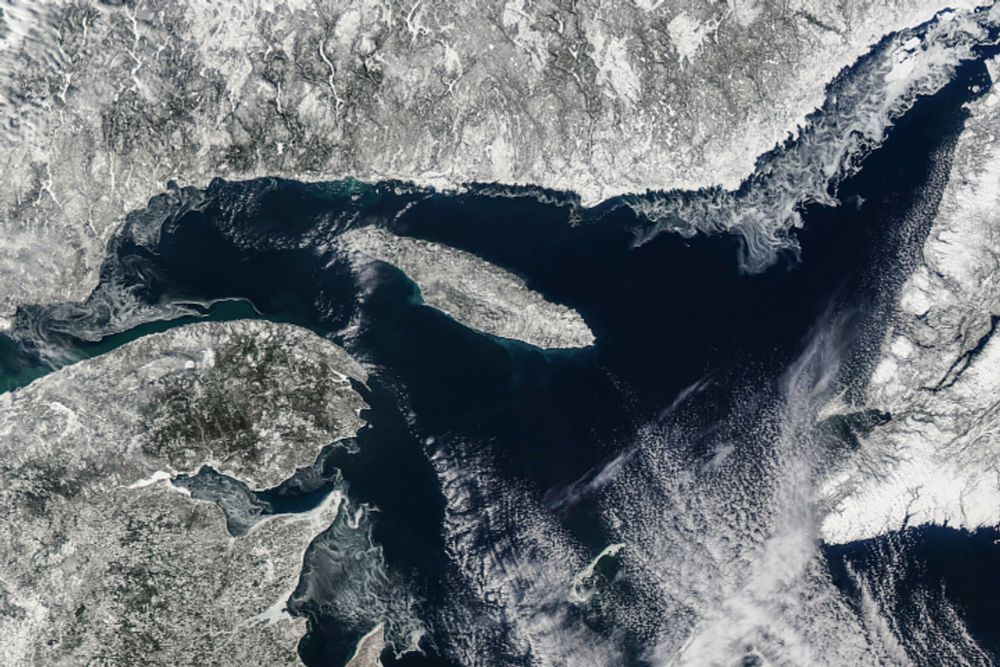
Low Ice in the Gulf of St. Lawrence
The body of water off eastern Canada is one of the southernmost locations where Arctic sea ice forms, but its extent in winter 2024-2025 was well below normal.
earthobservatory.nasa.gov
March 24, 2025 at 1:53 PM
Sea ice has been well below average in the Gulf of St. Lawrence this winter. A recent NASA "Image of the Day," acquired by the Moderate Resolution Imaging Spectroradiometer on NASA’s Aqua satellite, shows the Gulf of St. Lawrence on March 13, 2025.
earthobservatory.nasa.gov/images/15406...
earthobservatory.nasa.gov/images/15406...
Reposted by NSIDC
🚨 The annual minimum has likely passed ➡️ "On March 1, Antarctic sea ice likely reached its minimum extent of 1.98 million square kilometers (764,000 square miles), tying for second lowest extent with 2022 and 2024 in the 47-year satellite record."
See @nsidc.bsky.social: nsidc.org/sea-ice-toda...
See @nsidc.bsky.social: nsidc.org/sea-ice-toda...
March 20, 2025 at 6:46 PM
🚨 The annual minimum has likely passed ➡️ "On March 1, Antarctic sea ice likely reached its minimum extent of 1.98 million square kilometers (764,000 square miles), tying for second lowest extent with 2022 and 2024 in the 47-year satellite record."
See @nsidc.bsky.social: nsidc.org/sea-ice-toda...
See @nsidc.bsky.social: nsidc.org/sea-ice-toda...
Reposted by NSIDC
Arctic Science Summit Week starts today #ASSW2025! The int'l mtg, focused on research cooperation & collaboration, is being held in Boulder this yr. Related meetings incl @arctictogether.bsky.social. INSTAARs are among the ~800 participants.
Info:
www.assw.info
cires.colorado.edu/news/cires-h...
Info:
www.assw.info
cires.colorado.edu/news/cires-h...

March 20, 2025 at 5:28 PM
Arctic Science Summit Week starts today #ASSW2025! The int'l mtg, focused on research cooperation & collaboration, is being held in Boulder this yr. Related meetings incl @arctictogether.bsky.social. INSTAARs are among the ~800 participants.
Info:
www.assw.info
cires.colorado.edu/news/cires-h...
Info:
www.assw.info
cires.colorado.edu/news/cires-h...
Reposted by NSIDC
The Arctic is warming four times faster than anywhere else on the planet. Glaciologist Twila Moon, deputy lead scientist at @nsidc.bsky.social, joins us to explain the science behind why the Arctic circle is particularly vulnerable to warming. bit.ly/3FvLnSG
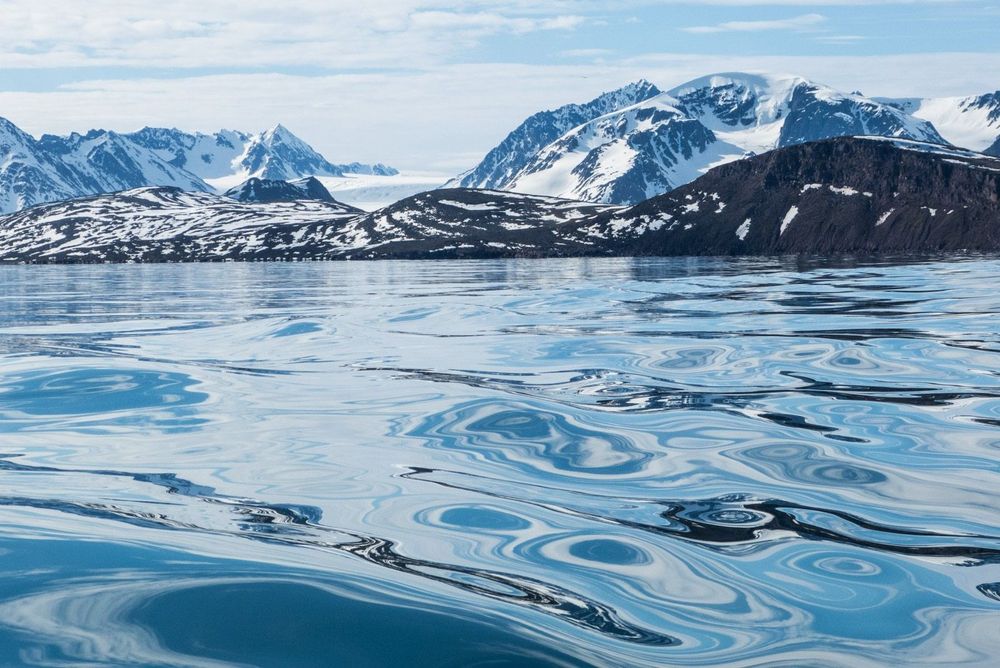
March 20, 2025 at 3:28 PM
The Arctic is warming four times faster than anywhere else on the planet. Glaciologist Twila Moon, deputy lead scientist at @nsidc.bsky.social, joins us to explain the science behind why the Arctic circle is particularly vulnerable to warming. bit.ly/3FvLnSG
Reposted by NSIDC
Where do weather forecasts come from? #NOAA’s satellites, radar, and experts work behind the scenes to track storms, predict weather, and send out critical alerts. Without them, forecasting would be a lot less reliable, atmospheric scientist Kari Bowen @cires.colorado.edu explains:
March 20, 2025 at 6:48 AM
Where do weather forecasts come from? #NOAA’s satellites, radar, and experts work behind the scenes to track storms, predict weather, and send out critical alerts. Without them, forecasting would be a lot less reliable, atmospheric scientist Kari Bowen @cires.colorado.edu explains:
Reposted by NSIDC
Essentially reading if you want to understand the feedback loops accelerating the melting of the Greenland Ice Sheet, which is contributing to global sea level rise.
By Twila Moon, deputy lead scientist @nsidc.bsky.social & researcher at @cires.colorado.edu
By Twila Moon, deputy lead scientist @nsidc.bsky.social & researcher at @cires.colorado.edu
Twila Moon has been studying the Greenland Ice Sheet for 20 years. In some ways, Greenland's tipping point has already been crossed: A certain amount of ice loss is locked in for centuries or millennia. But how fast it goes is up to humans, now thebulletin.org/premium/2025...

The shrinking of the Greenland Ice Sheet can’t be stopped—but it can and must be slowed
Ice loss in Greenland is already large, irreversible, and greatly accelerated after centuries of near stability. Though a tipping point for future ice loss has already been crossed, the pace of this l...
thebulletin.org
March 20, 2025 at 3:32 PM
Essentially reading if you want to understand the feedback loops accelerating the melting of the Greenland Ice Sheet, which is contributing to global sea level rise.
By Twila Moon, deputy lead scientist @nsidc.bsky.social & researcher at @cires.colorado.edu
By Twila Moon, deputy lead scientist @nsidc.bsky.social & researcher at @cires.colorado.edu
"We're trying to figure out why we’re finding all this ice in the clouds. The answer could help scientists understand the pace of Arctic melt." Scientists from the NASA ARCSIX mission are working to identify why Arctic ice is melting faster than predicted.
Learn more @space.com: bit.ly/4hGH849
Learn more @space.com: bit.ly/4hGH849
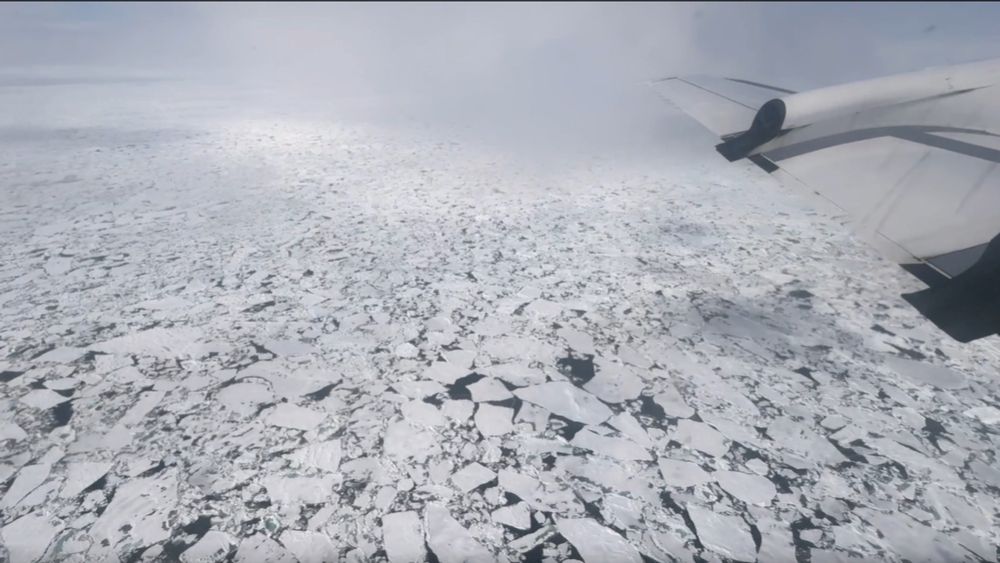
Arctic ice is melting faster than expected — and the culprit could be dust
"The Arctic is changing faster than anywhere else on the planet, so the question we’re trying to ask here is: Is the Arctic going to change fast, or really fast?"
bit.ly
March 20, 2025 at 3:16 PM
"We're trying to figure out why we’re finding all this ice in the clouds. The answer could help scientists understand the pace of Arctic melt." Scientists from the NASA ARCSIX mission are working to identify why Arctic ice is melting faster than predicted.
Learn more @space.com: bit.ly/4hGH849
Learn more @space.com: bit.ly/4hGH849
Reposted by NSIDC
Where do weather forecasts come from? #NOAA’s satellites, radar, and experts work behind the scenes to track storms, predict weather, and send out critical alerts. Without them, forecasting would be a lot less reliable, atmospheric scientist Kari Bowen @cires.colorado.edu explains:
March 19, 2025 at 1:48 PM
Where do weather forecasts come from? #NOAA’s satellites, radar, and experts work behind the scenes to track storms, predict weather, and send out critical alerts. Without them, forecasting would be a lot less reliable, atmospheric scientist Kari Bowen @cires.colorado.edu explains:
Reposted by NSIDC
Transition time of year... the central #Arctic (e.g. >80°N) continues to be very cold for weeks after the annual sea-ice extent maximum. However, this maximum is reached in March due to melting sea ice in the marginal seas - look how far south they extend!
Graphic at zacklabe.com/arctic-clima... 🌊
Graphic at zacklabe.com/arctic-clima... 🌊
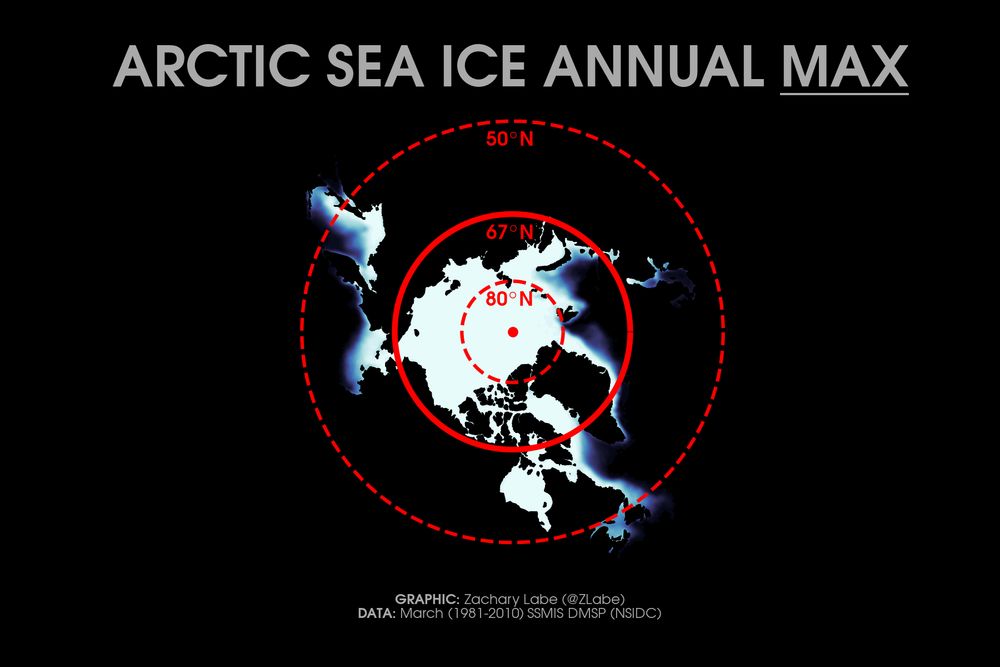
March 19, 2025 at 12:58 AM
Transition time of year... the central #Arctic (e.g. >80°N) continues to be very cold for weeks after the annual sea-ice extent maximum. However, this maximum is reached in March due to melting sea ice in the marginal seas - look how far south they extend!
Graphic at zacklabe.com/arctic-clima... 🌊
Graphic at zacklabe.com/arctic-clima... 🌊
Reposted by NSIDC
Starting Thursday, CIRES is hosting the largest event in the institute's history: Arctic Science Summit Week (ASSW), an annual meeting focused on research cooperation and collaboration in the Arctic. @colorado.edu @nsidc.bsky.social
Read more: cires.colorado.edu/news/cires-h...
Read more: cires.colorado.edu/news/cires-h...

March 18, 2025 at 10:00 PM
Starting Thursday, CIRES is hosting the largest event in the institute's history: Arctic Science Summit Week (ASSW), an annual meeting focused on research cooperation and collaboration in the Arctic. @colorado.edu @nsidc.bsky.social
Read more: cires.colorado.edu/news/cires-h...
Read more: cires.colorado.edu/news/cires-h...
Arctic Science Summit Week is happening this week at the University of Colorado Boulder! The conference provides opportunities for coordination, cooperation & collaboration between the scientific organizations involved in Arctic research.
Learn more: www.assw.info
Learn more: www.assw.info
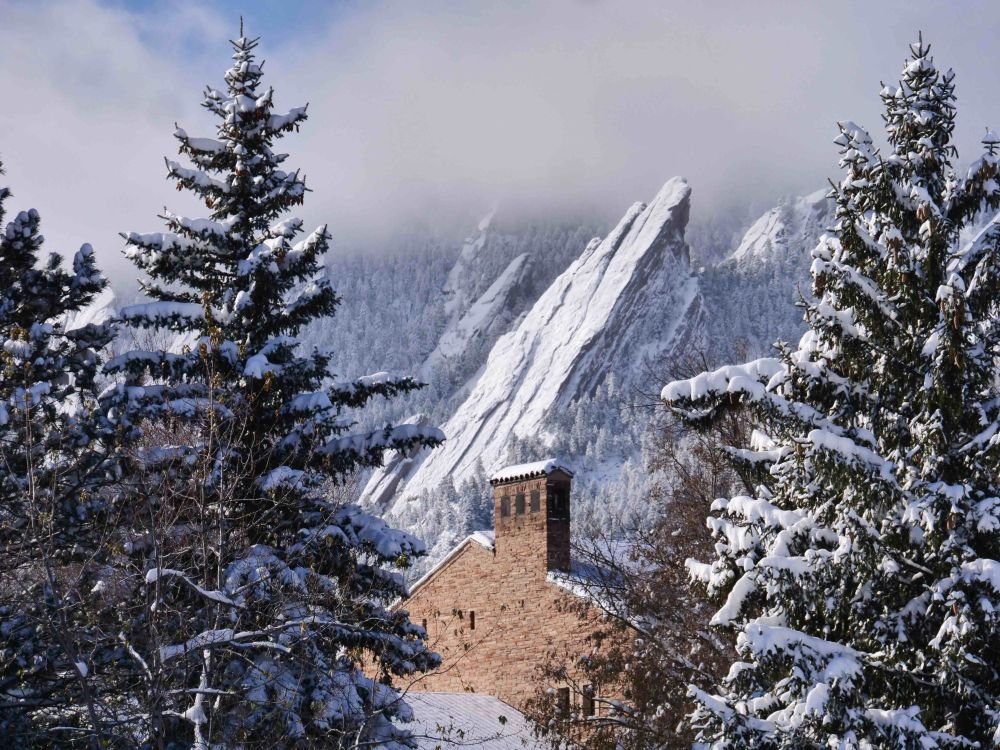
March 18, 2025 at 6:31 PM
Arctic Science Summit Week is happening this week at the University of Colorado Boulder! The conference provides opportunities for coordination, cooperation & collaboration between the scientific organizations involved in Arctic research.
Learn more: www.assw.info
Learn more: www.assw.info

